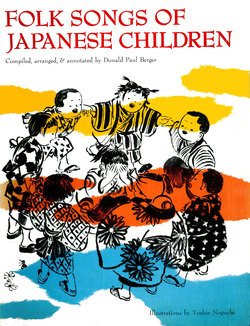Читать книгу Folk Songs of Japanese Children - Donald Paul Berger - Страница 8
На сайте Литреса книга снята с продажи.
ОглавлениеPREFACE
CHILDREN'S SONGS have a wide range of appeal: for the young as well as for those of all ages. The songs of Japan are no exception. The selections in this book have been arranged with this in mind. This collection can therefore serve a variety of interests. As the melody has been placed in the soprano line in most instances, preschool and lower elementary school children can derive pleasure from unison singing and playing the song games. Upper elementary school children can perform the songs as written, in two parts. The melodic ranges of the songs are well suited to the limited range of changing voices, making them ideal for junior high school students. High school choral directors could present these songs in concert form for female voices, as they can easily be performed by mature voices.
Wherever it seemed logical to do so, various kinds of information concerning Japan have been included so that the commentary might serve not only to explain the texts, but to interest and inform all those who wish to learn about Japanese culture.
Additionally it is hoped that this brief encounter with Japanese folk music will stimulate desire and interest on the part of those who have sung the songs and read the comments to explore the vast amount and variety of the world's music. Music, for the majority of us in the West, has meant only Western music. We have remained largely ignorant of the music world around us.
The piano accompaniments have been arranged simply in accord with the nature of the songs. As far as possible, when a piano is added to this type of music, the arranger has endeavored to keep a Japanese flavor. The harmonies have also been conceived along these lines.
Approximately half of the songs contained here are familiar throughout Japan, while the remaining songs are of specific locales. In going through more than a hundred songs, the attempt was made to choose representative songs, and at the same time, those which would be of melodic and textual interest for readers whose background is primarily Western.
Both the singable English texts and the romanized form of the Japanese texts have been included, as well as the original kana (syllabary) form, so that the songs may be sung in either language. The English texts have been presented so as to parallel the literal translation from the original Japanese. In some cases, because of the difficulty involved in trying to express exactly the same thought in English as in Japanese, alteration became necessary. However, an accurate literal explanation accompanies each song in the commentary.
The arranger is deeply indebted to Professor Shigeo Kishibe of Tokyo University for his help in the choice of the songs in this collection, his comments on the songs, and his help with the translations. The book, Warabe Uta (Children's Songs) by Kasho Machida, was also of great value in making the song selections. The author is indebted to Mr. Hugh Brown for his help with the pronunciation notes. Gratitude is also expressed to Professor Kenji Asano of Yamagata University for his interesting ideas on the texts of the songs, which have helped immeasurably in the preparation of the commentary.
DONALD PAUL BERGER
